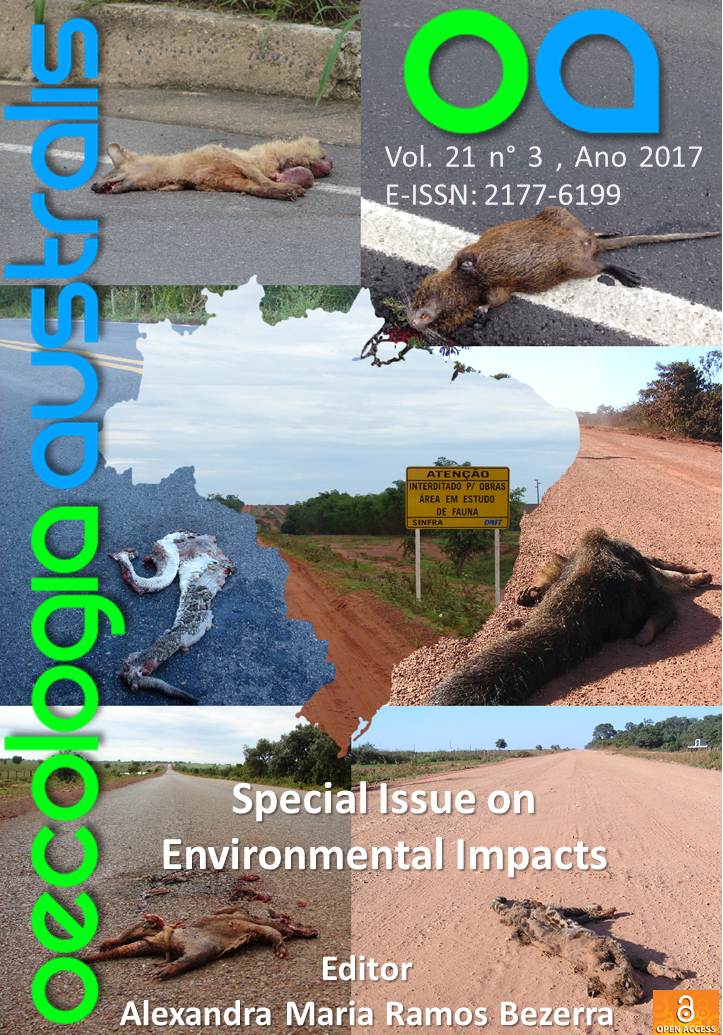ROAD EFFECTS ON WILDLIFE IN BRAZILIAN ENVIRONMENTAL LICENSING
DOI:
https://doi.org/10.4257/oeco.2017.2103.05Keywords:
environmental impact assessment, environmental permits, road ecology, road impacts, scopingAbstract
Environmental licensing is a political tool to protect the environment and encourage sustainable development. Environmental Impact Assessments (EIAs) are the important document for impact assessment of activities during environmental licensing, and all decision-making process and effectiveness depend on its quality. Road construction, paving and widening require the approval of an EIA, since these activities are responsible for a large number of environmental impacts. Here we present an analysis of 16 EIAs of Brazilian roads, considering the impacts on terrestrial and aquatic fauna. We discuss if theimpacts recognized in road ecology literature are identified and assessed in these studies, if mitigation actions are based on information presented on the EIA, and the quality of road mortality assessment. We based the analysis on a checklist of road impacts and on scores calculated based on a set of criteria. We calculated relative scores for each EIA and for each type of impact across all studies. EIA quality was low (more than half EIAs had relative equal score or less than 50%); the studies analyzed poorly addressed the impacts recognized in the academic literature. The presence of impacts was not coherent along different sections of the EIA (baseline studies, impact matrix and proposition of mitigation measures). In 27.63% of cases the impacts were not present in any section of the EIA. In some situations, the impact was present in the baseline studies, but not in impact matrix or mitigation propositions, and in half of the situations analyzed the relative scoreof EIAs was lower than 30% for the quality of road mortality impact assessment. We recommend the improvement of the terms of reference should be a priority to enforce the elaboration of enhanced quality studies. A Portuguese version of this manuscript is available on request.


